
Guiseley is a town in metropolitan borough of the City of Leeds, West Yorkshire, England. Historically part of the West Riding of Yorkshire, it is situated south of Otley and Menston and is now a north-western suburb of Leeds.

Yeadon is a town within the metropolitan borough of the City of Leeds, West Yorkshire, England.

The Beiderbecke Affair is a television series produced in the United Kingdom by ITV during 1985, written by the prolific Alan Plater, whose lengthy credits in British television since the 1960s included the four-part mini series Get Lost! for ITV in 1981. The Beiderbecke Affair has a similar style to Get Lost!, wherein Neville Keaton and Judy Threadgold played in an ensemble cast. Although The Beiderbecke Affair was intended as a sequel to Get Lost!, Alun Armstrong proved to be unavailable and the premise was reworked. It is the first part of The Beiderbecke Trilogy, with the two sequel series being The Beiderbecke Tapes (1987) and The Beiderbecke Connection (1988).

Horsforth is a town and civil parish in the City of Leeds, West Yorkshire, England, five miles north-west of Leeds city centre. Historically a village within the West Riding of Yorkshire, it had a population of 18,895 at the 2011 Census. It became part of the City of Leeds metropolitan borough in 1974. In 1999, a civil parish was created for the area, and the parish council voted to rename itself a town council. The area is within the Horsforth ward of Leeds City Council, which also includes the southern part of Rawdon.

Rawdon is a village and civil parish in the metropolitan borough of the City of Leeds, West Yorkshire, England. It sits on the River Aire and on the A65 south of Yeadon.
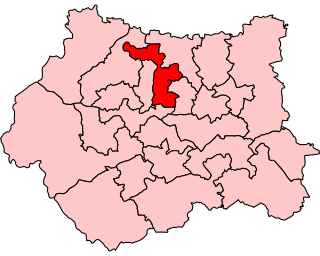
Pudsey is a constituency represented in the House of Commons of the UK Parliament since 2010 by Stuart Andrew, a Conservative.
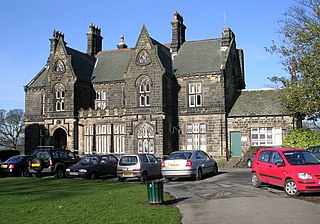
Aireborough was a local government district in the West Riding of Yorkshire, England from 1937 to 1974. It was formed through the abolition of the urban districts of Guiseley, Yeadon and Rawdon and enlarged by the addition of parts of Otley urban district and parts of the civil parishes of Esholt, Hawksworth and Menston in the Wharfedale rural district on 1 April 1937. Aireborough Urban District was administered from Micklefield House in Rawdon which had been acquired by Rawdon UDC in 1930. The district is, since 1974, part of Leeds and Esholt is in Bradford
The Gazette & Observer, in full the Ilkley, Wharfedale and Aireborough Gazette & Observer, was a weekly newspaper published by Wharfedale Newspapers of Ilkley, West Yorkshire, England, and part of the Newsquest group. It began publication on 10 February 2011 as a merger of the two previous local papers, the Ilkley Gazette and the Wharfedale & Airedale Observer. However, three months later, the paper was spun off into the two previous titles after customer dissatisfaction.
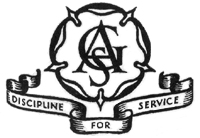
Aireborough Grammar School was an English state grammar school situated on the Yeadon / Guiseley border in Aireborough, West Yorkshire. The school was founded in 1910 and closed in 1991.

Leeds Town Hall is a 19th-century municipal building on The Headrow, Leeds, West Yorkshire, England. Planned to include law courts, a council chamber, offices, a public hall, and a suite of ceremonial rooms, it was built between 1853 and 1858 to a design by the architect Cuthbert Brodrick. With the building of the Civic Hall in 1933, some of these functions were relocated, and after the construction of the Leeds Combined Court Centre in 1993, the Town Hall now serves mainly as a concert, conference and wedding venue, its offices still used by some council departments. It was designated a Grade I listed building in 1951.

The Otley and Ilkley Joint Railway was a railway line running between the towns of Otley and Ilkley in West Yorkshire. The line was managed and run jointly by the Midland Railway (MR) and the North Eastern Railway (NER) and was 6+1⁄2 miles (10 km) long. Opened to passenger traffic on 1 August 1865 and freight traffic some months later, the line ran for almost 100 years before partial closure in July 1965 when the line to Otley closed. Today passenger services run over the rest of the line as part of the West Yorkshire Passenger Transport Executive (WYPTE) Wharfedale Line.

Hawksworth is a village 1 mile (1.6 km) west of the town of Guiseley in West Yorkshire, England. It is located to the south of Menston and north of Baildon.
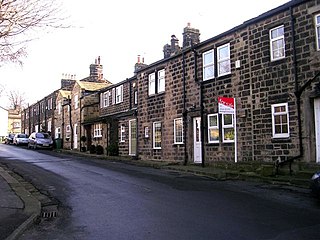
Little London is a village in West Yorkshire, England, that is divided between the Guiseley and Rawdon and the Horsforth wards of the City of Leeds and the Idle and Thackley ward of the City of Bradford. It comprises a conservation area in the westernmost part of Rawdon town which is unique in that the historic area covered by the designation straddles the boundary of districts of Leeds and of neighbouring Bradford. Apperley Lane (A658) forms the municipal boundary.
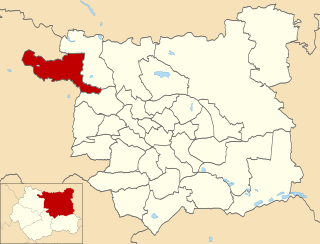
Guiseley and Rawdon is an electoral ward of Leeds City Council in the north west of Leeds, West Yorkshire, covering both the town of Guiseley, the majority of the village of Rawdon and the southern part of the town of Yeadon.

Otley and Yeadon is an electoral ward of Leeds City Council in north west Leeds, West Yorkshire, covering the towns of Otley and Yeadon as well as Newall.

Wakefield Town Hall is a municipal building in Wood Street in Wakefield, West Yorkshire, England. It remains a venue for weddings and civil partnerships but is no longer the headquarters of Wakefield Council which is now based at County Hall. The town hall is a Grade I listed building.

Ossett Town Hall is a municipal building in the Market Place, Ossett, West Yorkshire, England. The town hall, which was the headquarters of Ossett Borough Council until 1974, is a grade II listed building.
Guiseley and Rawdon is a ward in the metropolitan borough and Rawdon is a civil parish in the City of Leeds, West Yorkshire, England. This list also contains the listed buildings in Otley and Yeadon ward. The wards and parish contain 99 listed buildings that are recorded in the National Heritage List for England. Of these, one is listed at Grade I, the highest of the three grades, three are at Grade II*, the middle grade, and the others are at Grade II, the lowest grade. The wards and parish contain the towns of Guiseley and Yeadon, the villages of Rawdon and Hawksworth, and the surrounding area. Most of the listed buildings are houses, cottages and associated structures, farmhouses and farm buildings. The other listed buildings include churches and items in churchyards, a village cross, a school, a former hospital, a railway bridge, a railway tunnel portal and retaining walls, a former tram shed, a town hall, and a telephone kiosk.

Guiseley Theatre, formerly Guiseley Town Hall, is a municipal building at The Green, Guiseley, West Yorkshire, England. The structure, which was once the headquarters of Guiseley Urban District Council, is now a theatre.

Loftus Town Hall is a municipal building in Water Lane in Loftus, North Yorkshire, England. The structure, which accommodates the offices and meeting place of Loftus Town Council, is a grade II listed building.



















